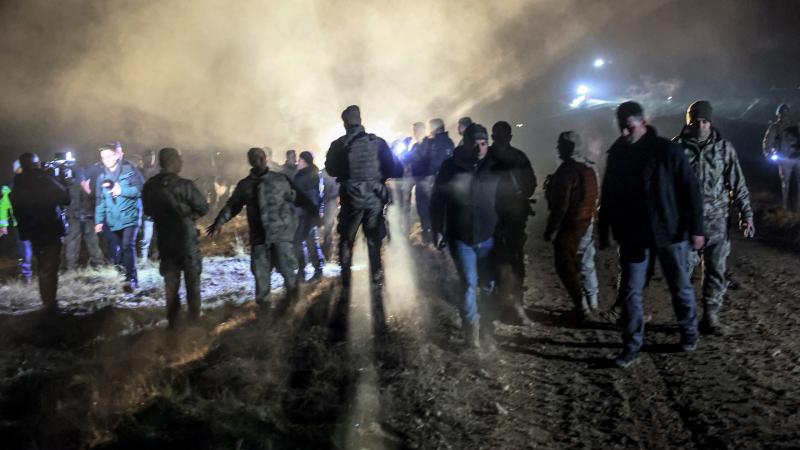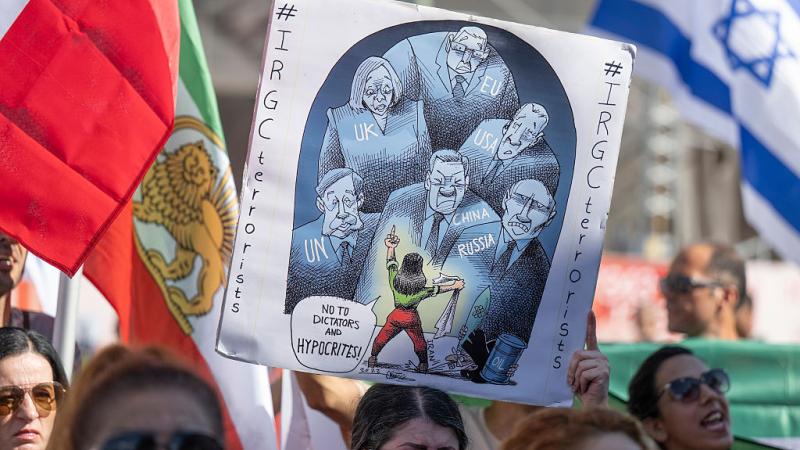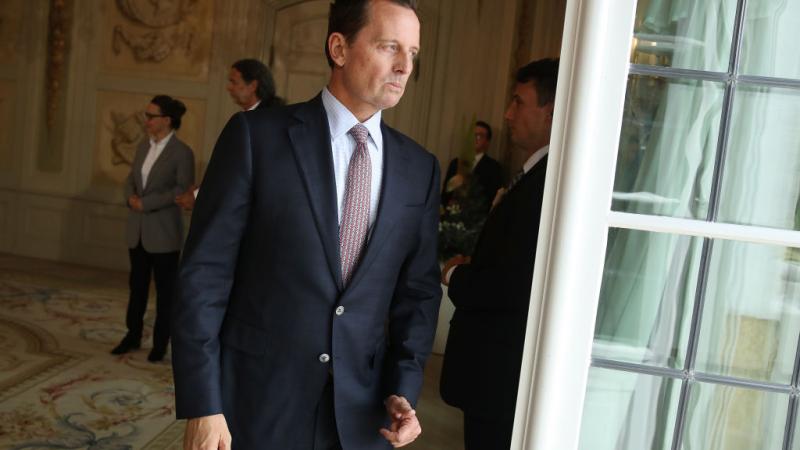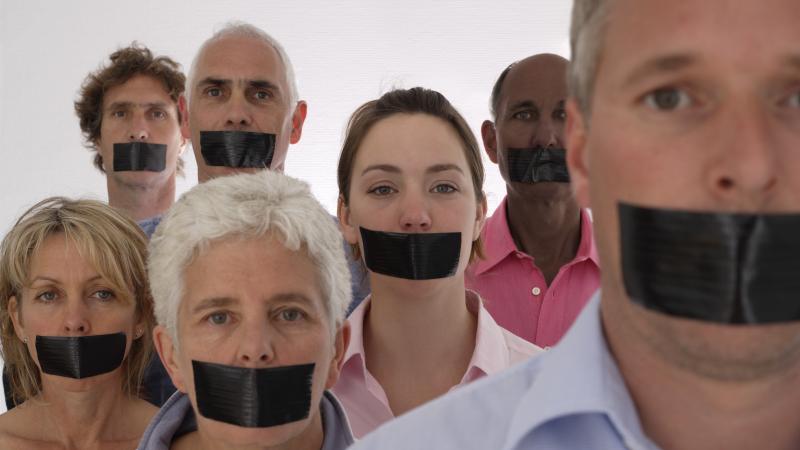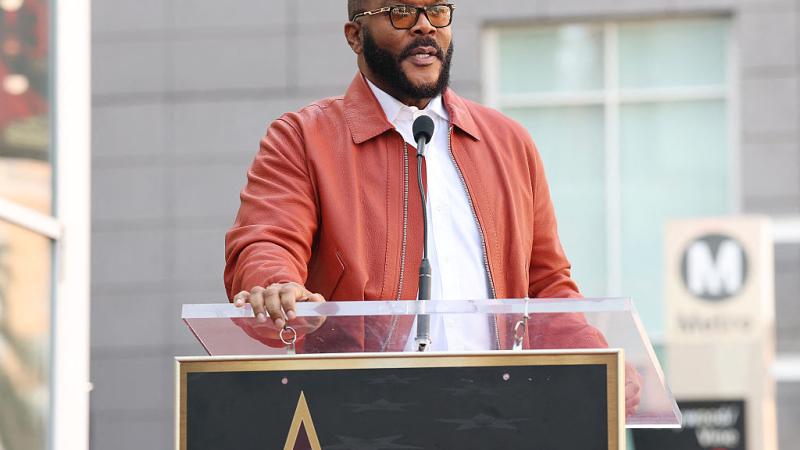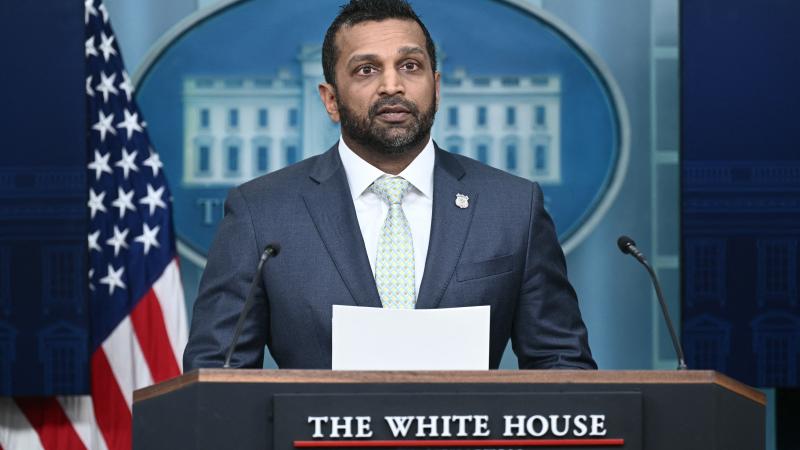Islamists' grip on power in Iran weakening as protesters demand regime change: experts
Analysts indicate Iran may be in the nascent stages of a revolution, warning an ongoing crackdown on demonstrations will likely escalate.
At the onset of 2023, the Islamist regime in Iran is facing an unprecedented threat to its hold on power from anti-government protests that continue to rage across the country, according to experts closely monitoring the situation.
That doesn't mean regime change is coming imminently, they note, although prominent Iranian pro-opposition figures in exile have predicted 2023 will be a year of "victory" with the government shaken by demonstrations.
Instead, analysts argue, the world is witnessing an early stage of a process that will yield significant change — if not revolution — inside Iran.
Regarding the prospect of the current protests overthrowing the regime, "the answer to that most likely is no," said Alex Vatanka, senior fellow and director of the Iran Program at the Middle East Institute. "The regime is entrenched with a track record of 43 years and counting of staying in power through use of repression, a hardcore support base that is well armed, well-funded, and still ideologically committed to this regime. About 15-20% of the population still supports the regime.
"But is this the beginning of a long-term process that leads to the end of the regime? The answer to that is much more likely positive."
Anti-government protests erupted across Iran in September, when a young woman died in the custody of Iran's so-called morality police, which had allegedly detained her for wearing a hijab, an Islamic head covering that's mandatory for women in Iran, in an "improper" way.
Since then, the protests have grown in scope and intensity, reaching all of Iran's 31 provinces and nearly 300 cities, according to local reports and the organized Iranian resistance movement. Chants calling for the regime's overthrow have been common at protests.
On Wednesday, locals in various cities marked the third anniversary of the death of Qassem Soleimani, former head of the elite Quds Force of Iran's Islamic Revolutionary Guards Corps, a U.S.-designated terrorist group, by burning billboards and posters of his image. The U.S. killed Soleimani, who many experts believe was the second most powerful Iranian official behind Supreme Leader Ali Khamenei, in January 2020.
"The Iranian population has proved it ditched reform and seeks wholesale change through street protests," said Benham Ben Taleblu, a senior fellow at the Foundation for Defense of Democracies.
Other experts are echoing that view.
"Iranian protesters today are not calling for reform but for the extinction of the Islamic Republic," wrote Eric Edelman, counselor at the Center for Strategic and Budgetary Assessments, and Ray Takeyh, senior fellow at the Council on Foreign Relations. "They want regime change."
Taleblu explained that this "revolutionary movement and activity" really began in December 2017, when a previous round of anti-regime protests broke out in Iran.
But the current protests are the "longest sustained in quite a while, an indication of the bravery and sense of desperation of the Iranian people," he said. "We're also seeing shrinking gaps in time between periods of protest. These demonstrations are likely to be sustained."
U.S.-based experts aren't the only ones reaching these conclusions. Iranian commentators on state TV are also saying this, noted Vatanka.
"The aging leadership has no connection to the young demographic, which has led the way in these protests," he said. "The regime is entirely disconnected from the majority of Iranians and has bridged that gap by repressing them. It doesn't listen or want to be transparent. It's unaccountable and corrupt. You have the same few hundred people still running a theocracy with an outlook almost of the Middle Ages. The younger generation doesn't see any bright future, and this is where it's different now. People are against religion of Islam, not just the regime. Younger people are just now politically maturing, and the regime has no clue how to deal with it."
Khamenei, 83, is particularly out of touch, according to critics, who note he hasn't traveled outside Iran since 1989, when he assumed power.
"He has nothing to tell younger Iranians and has no understanding of the outside world, living in a bubble, disconnected, banning young people from social media," said Vatanka.
The overwhelming majority of Iranians oppose the hijab, regardless of age and gender, and are becoming increasingly secular under a theocratic government, according to a recent study by the Tony Blair Institute in collaboration with the Group for Analyzing and Measuring Attitudes in Iran.
The study also showed that among Iranians who want regime change, 76% consider religion unimportant in their lives. Perhaps more striking, of those against the compulsory hijab, 84% also want to live in a secular state.
Amid such widespread opposition, even the Iranian political elite have become somewhat splintered. Former President Mohammad Khatami publicly praised the protesters' intent and slogan. Former Parliament Speaker Ali Larijani said, "We must provide the public venues for protest and a means of conducting a dialogue." And an official Iranian newspaper founded by Khamenei himself rejected his own claim that the U.S., Israel, and exiled Iranian opposition groups are to blame for the protests, citing instead a range of domestic factors from inflation to poor stewardship of the environment.
"Such support from mainstream politicians is unprecedented, indicating that the Islamic Republic's grip is weakening," wrote Takeyh and Edelman.
In this atmosphere, Iranian opposition leaders are emboldened and optimistic.
"There has been an irreversible change in the balance of power between the regime and the people, with the latter feeling more empowered and inspired to march toward toppling the regime," said Ali Safavi, a member of the Foreign Affairs Committee of the National Council of Resistance of Iran. "At no time in its 43-year rule has the regime been so weak and vulnerable, meaning that change is within reach and only a matter of time."
However, the regime has been waging a violent crackdown on protesters, including executions. There have also been reports of Iran's security forces weaponizing sexual assault on activists being held in detention centers in an effort to quell the protesters.
According to figures provided by the organized Iranian opposition, there have been hundreds of deaths and tens of thousands of detentions.
Amid the crackdown, political prisoner Maryam Akbari Monfared, who's been imprisoned in Iran for 13 years, penned an open letter to the Iranian people that was published this week detailing her situation and praising the protests. She expressed hope about the "sparks of this rebellious flame" but warned not to trust the regime's interrogators.
One thing the U.S. could do to help the protesters is highlight the regime's human rights abuses, according to experts.
"Push for accountability with human rights at places like the United Nations," said Vatanka. "These steps are welcome and makes it that much harder for the regime to resort to indiscriminate killings. The Biden administration should focus on the regime's behavior."
However, he added, there's no "silver bullet" for the U.S. to help the Iranian people and hurt the regime.
"The Iranian-American community mostly has one concern: what the Biden administration should not do to damage the protest movement," continued Vatanka, noting a revival of the 2015 nuclear deal with Iran would "undermine" the protesters.
On this issue, many observers are in agreement.
"I welcome all the targeted sanctions, coordinated multilateral measures, and hopefully ongoing covert measures [by the U.S.] to help the Iranian population," said Taleblu. "But ultimately, as long as the nuclear deal remains on table, there's no such thing as standing with the Iranian people."
Just the News has previously reported how the Biden administration is leaving the door open to a nuclear deal that would provide the regime with a windfall of cash even as it kills anti-government protesters at home and helps fuel Russia's war machine in Ukraine with lethal drones.
In a statement to Just the News, the State Department outlined how the administration has supported Iranian protesters through multiple rounds of sanctions against the regime, working with partners to remove Iran from the top U.N. women's rights body, and enabling access to information online for Iranians.
"The United States is committed to continuing to find practical ways, independently and with allies and partners, to support the Iranian people and to hold Iranian leaders accountable for denying them the enjoyment of their human rights and fundamental freedoms," a spokesperson said.
Experts have also called on the administration to impose harsher sanctions, improve communication among the demonstrators, and enable them to get around the regime's censorship and blocks on social media, among other measures, including formally declaring an end to nuclear negotiations, a step the administration has been unwilling to take.
An angry Iranian people against their own regime is, "if tapped, effectively America's biggest policy instrument" toward Iran, according to Vatanka. "This is a moment for creative policies."
However, the administration "continues to be reactionary," said Taleblu, noting that's limiting the effectiveness of U.S. policy.
On the ground in Iran, a key development to watch this year, according to analysts, is the extent to which worker strikes spread.
"The regime is incapable of any genuine compromise," said Taleblu. "This is a zero-sum contest — the street versus the state, or the state versus society. Khamenei knows this and what's at stake."

